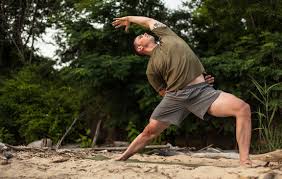
The research team tested a treatment plan based on sudarshan kriya yoga, a type of yoga that focuses on breathing-based meditation. Twenty-one veterans from Iraq and Afghanistan participated in the randomized, controlled study. Eleven of the veterans participated in the yoga program, which consisted of daily three-hour sessions for seven days. The yoga program offered a regimen of meditation, stretching, and group discussion. The remaining 10 veterans served as the control group. The researchers assessed all 21 veterans a week before the study began and a week, a month, and a year after the treatment.
The veterans who participated in the yoga treatment demonstrated reduced PTSD symptoms. Their bouts of PTSD were both less frequent and less intense than those of the control group. The yoga participants had lower anxiety, felt less affected by intrusive memories, and had less intense physiological responses to startling stimuli.
Yoga is one possible alternative to the traditional PTSD treatments of behavioral therapy and medication. The researchers emphasize the importance of selecting PTSD treatments that fit the individual patient. Most veterans with PTSD receive only one type of treatment and that treatment may or may not be effective for that patient.
Richard Davidson, one of the study’s authors and professor of psychology and psychiatry at UW-M, explains that “A clinician could use a ‘tool box’ of psychological assessments to determine the cognitive and emotional style of the patient, and thereby determine a treatment that would be most effective for that individual. Right now, a large fraction of individuals who are given any one type of therapy are not improving on that therapy. The only way we can improve that is if we determine which kinds of people will benefit most from different types of treatments.”
This research is published in the Journal of Traumatic Stress.
Previous news in PTSD:



 © 2025 Unyte Health US Inc.
© 2025 Unyte Health US Inc.